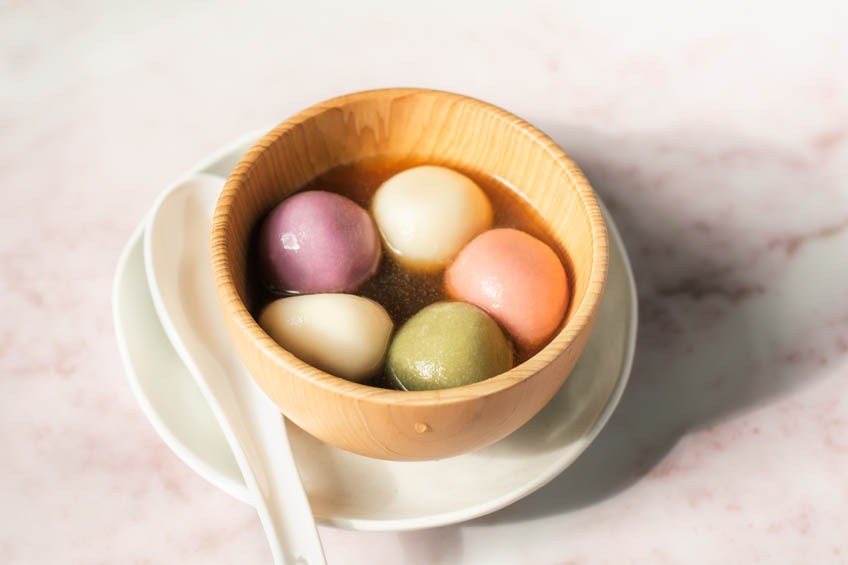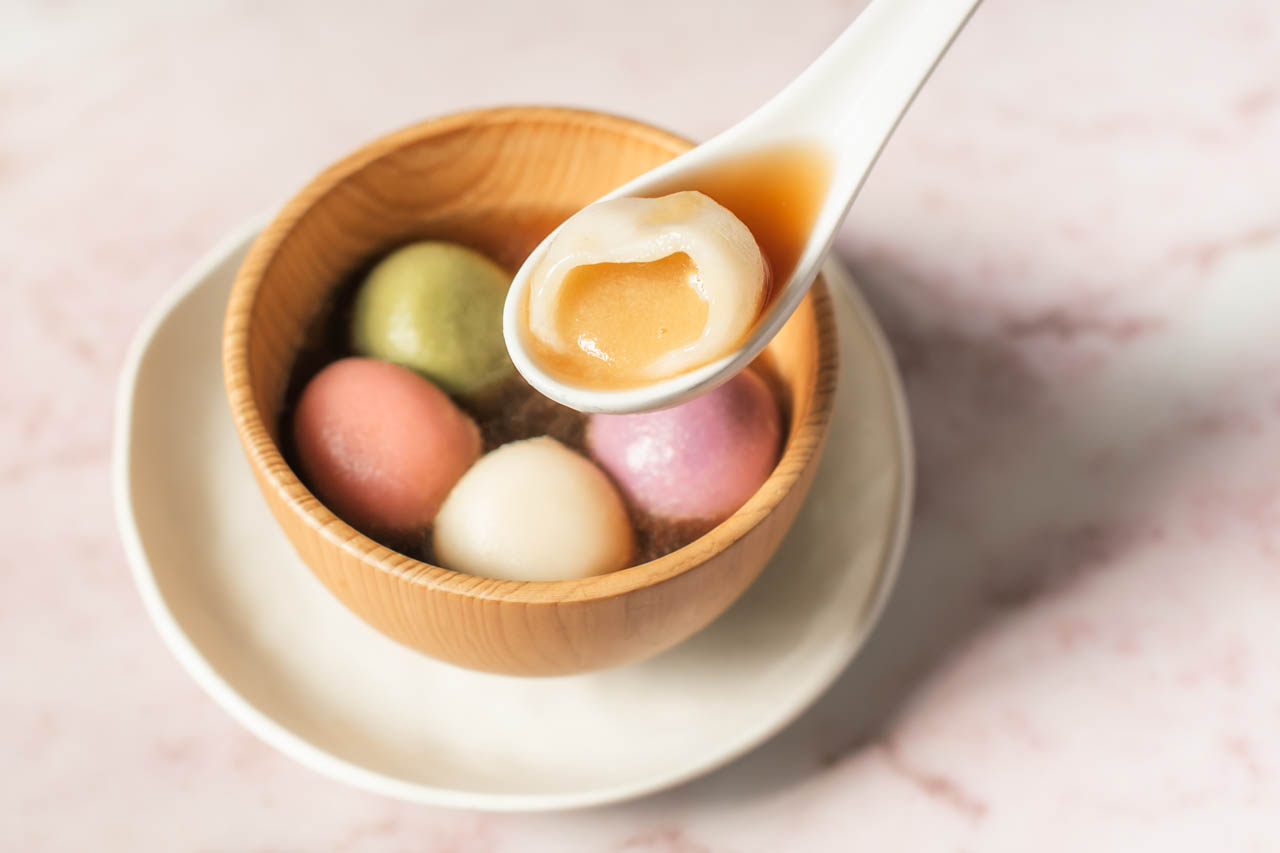
Chinese sweet glutinous rice dumplings (Tang Yuan or 湯圓) are a beloved classic dessert if there ever was one. They are especially popular during holidays when family and loved ones gather — including Winter Solstice, Lunar New Year, Lantern Festival, Mid-Autumn Festival, weddings, birthdays, etc. Their smooth round shape symbolizes togetherness which makes them an auspicious food to eat on those occasions. But really, tang yuan is loved any time of year, by young and old, enjoyed at home or at dessert houses. Tender and chewy glutinous rice dough is filled with a sweet filling — in this case, an oozy sesame filling. For me, tang yuan served in a brown sugar ginger broth is the greatest of all so I’ve included the simple recipe for that here too. Sometimes, tang yuan dough is cheerfully coloured in lovely hues. I divided my dough into four; left one batch plain (white) and used matcha powder (green) and freeze-dried powders of raspberry (pink) and purple potato (purple) for the rest. Alternatively, use food colouring, or replace the water in the dough with juices such as beetroot, pomegranate, carrot, etc. for colour.
Note 1: Equipment for grinding sesame seeds — it’s important to get a fine grind of the sesame seeds to achieve the desired molten, flowing filling when you bite into a dumpling. I use a small Nutribullet to make the filling. If you don’t have a small blender like that, your next best tool is a spice or coffee grinder. Once sesame seeds are grounded to the consistency of damp, fine sand, transfer into a bowl and mix with the caster sugar and butter (melted would be easiest) by hand. If you only have a full-size blender or food processor, I suggest doubling the amount of sesame seeds to have enough volume for it to pulverize properly. You can make a double batch of filling balls which can be kept frozen for 2-3 months for another day.
Note 2: Freezing — once formed, tang yuan can be frozen for another day. Arrange in a single layer, not touching, on parchment-lined tray. Freeze for an hour or until very firm, but not so long that they start to crack. Transfer to a ziptop bag with the air pushed out and store for 3-4 weeks. Cook from frozen exactly the same way as cooking fresh – it will simply take longer for the tang yuan to float to the surface.
Related: Fried Sweet Peanut Dumplings
ingredients
Filling
Glutinous rice dough
Ginger broth for serving
directions
This recipe requires 1 hour 20 minutes chill time.

Toast sesame seeds in a dry skillet over medium-low heat for 5 minutes or until golden brown and fragrant, stirring constantly and being careful not to scorch them. Transfer to a bowl to cool.
In a small blender or a small food processor (or spice grinder, see note 1), pulse toasted sesame seeds until pulverized into consistency of slightly damp sand. Add sugar and pulse until well mixed. Add butter (along with a pinch of salt if using unsalted butter) and pulse again until mixture is homogenous. Scrape into a bowl and place in freezer for 20 minutes or until firm but still soft enough to scoop out and roll into small balls (2 teaspoons or 10 grams each). Place rolled balls on parchment-lined tray and freeze for 1 hour up to overnight. This step ensures the filling is very firm and much easier to handle when forming the dumplings later.
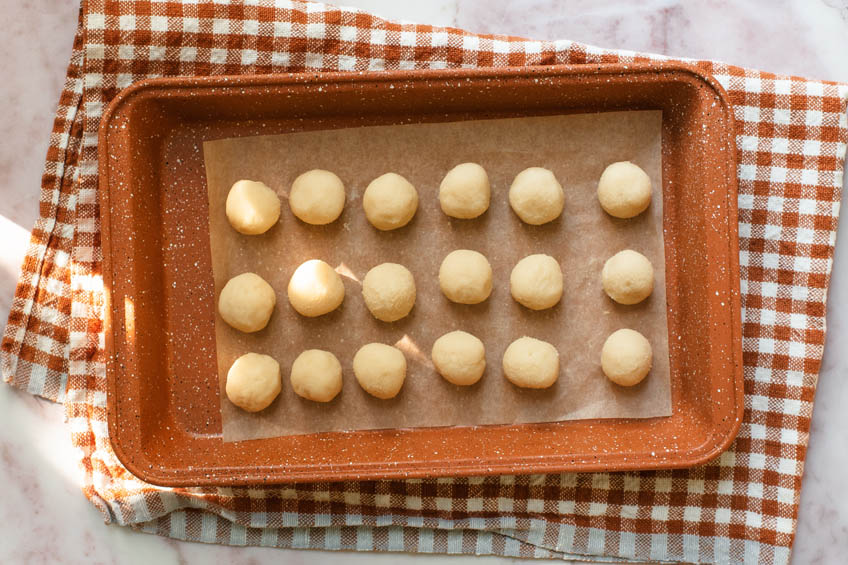
Once balls are frozen solid, prepare the dough by mixing the glutinous rice flour with warm water. Hold some water back and work it in as needed. Knead into a smooth, pliable dough. If dough feels dry, dampen palms with water and knead it into the dough. If dough is too wet, sprinkle more flour by the tablespoon. Dry dough may crack and break apart during cooking and wet dough may again, fall apart during cooking. Glutinous rice flour is a misnomer in that it contains no gluten, which means the dough will not be overworked. Keep kneading and adjusting with water and flour as needed until the dough is smooth and pliable and not at all wet or sticky to touch. It should be easy to handle.
If making coloured dough, divide the dough up and add freeze-dried powders. Knead until colour is fully homogenous. Add more for more saturated colours if desired, noting that they darken after cooking too. Cover dough balls tightly with plastic wrap to prevent drying out. Rest 20 minutes.
While dough rests, make sweet ginger broth. Bring water to a boil in a small pot. Add ginger slices. Simmer 20 minutes. Add sugar and simmer until dissolved. Discard ginger slices. Set aside and keep warm.
When dough has rested, roll into rope(s) and cut into 12 g pieces, about 2 teaspoons each. I divided the dough into 4 colours (white, green, pink and purple) and each colour yielded 5-6 pieces of dough (or 20 pieces in total; I had more dough than I had filling balls). Cover dough pieces well with plastic wrap to prevent drying out while you make each dumpling.
To form a dumpling, use a thumb to press a deep dimple in the center of dough ball. Place filling ball inside dimple (tip: work near the freezer and take one filling ball out at a time to keep the rest frozen solid). Bring the dough up and around the filling ball, nudging and stretching gently up and around to fully seal at the top. Check for any holes and push dough over to cover. Use palms to roll dumpling smooth and round. Set finished dumplings on clean, parchment-lined tray. Drape a kitchen towel over the finished dumplings while you work. I put the whole tray in the freezer after every few dumplings are formed, covered in a kitchen towel to minimize cracks in the dough.
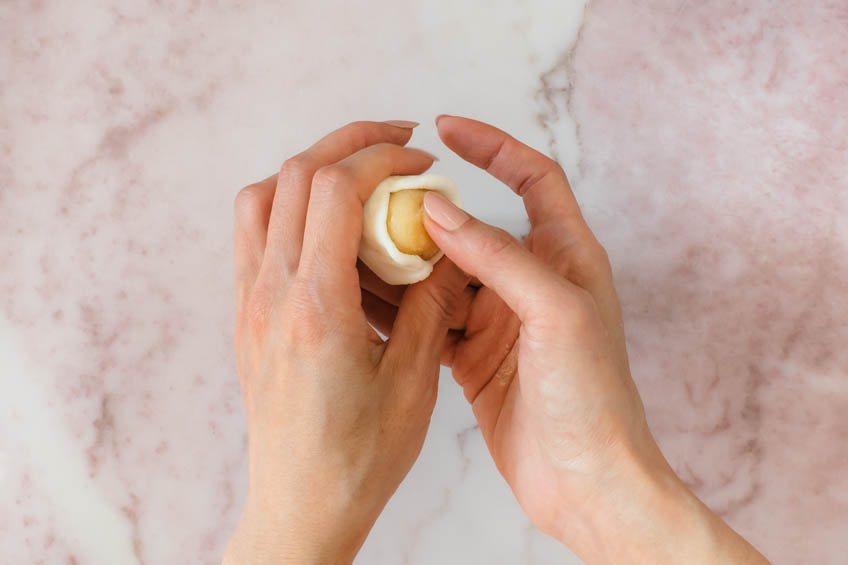
Cook or freeze dumplings (see note 2) right away. Leaving them out too long on the counter may result in cracks in the dough which will lead to breakage and leakage during cooking.
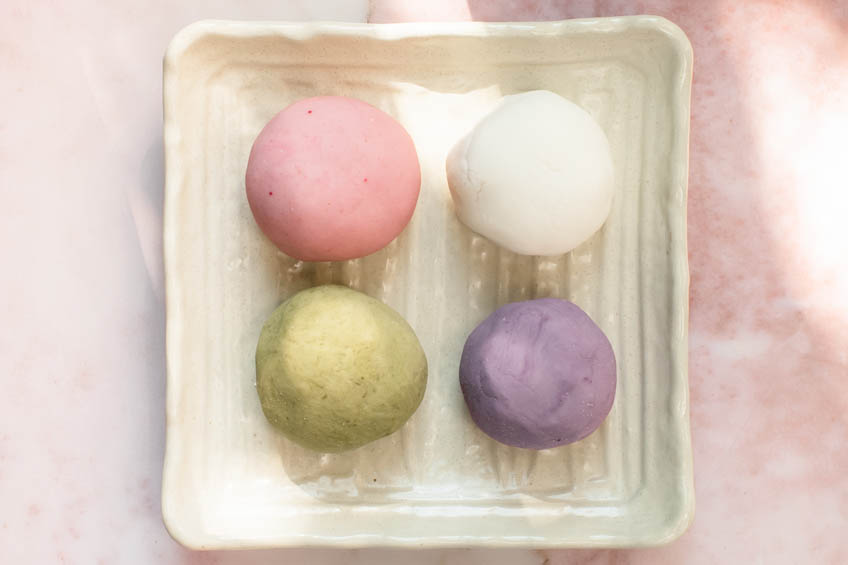
To cook, bring pot of water to a boil. Using a slotted spoon or long-handled colander, gently lower dumplings into the water. Adjust temperature to maintain a constant boil (but not an aggressive boil). They will sink to the bottom. Stir gently to prevent sticking. Once dumplings float to the top, cook 30 seconds more. Serve immediately in warm ginger broth.
